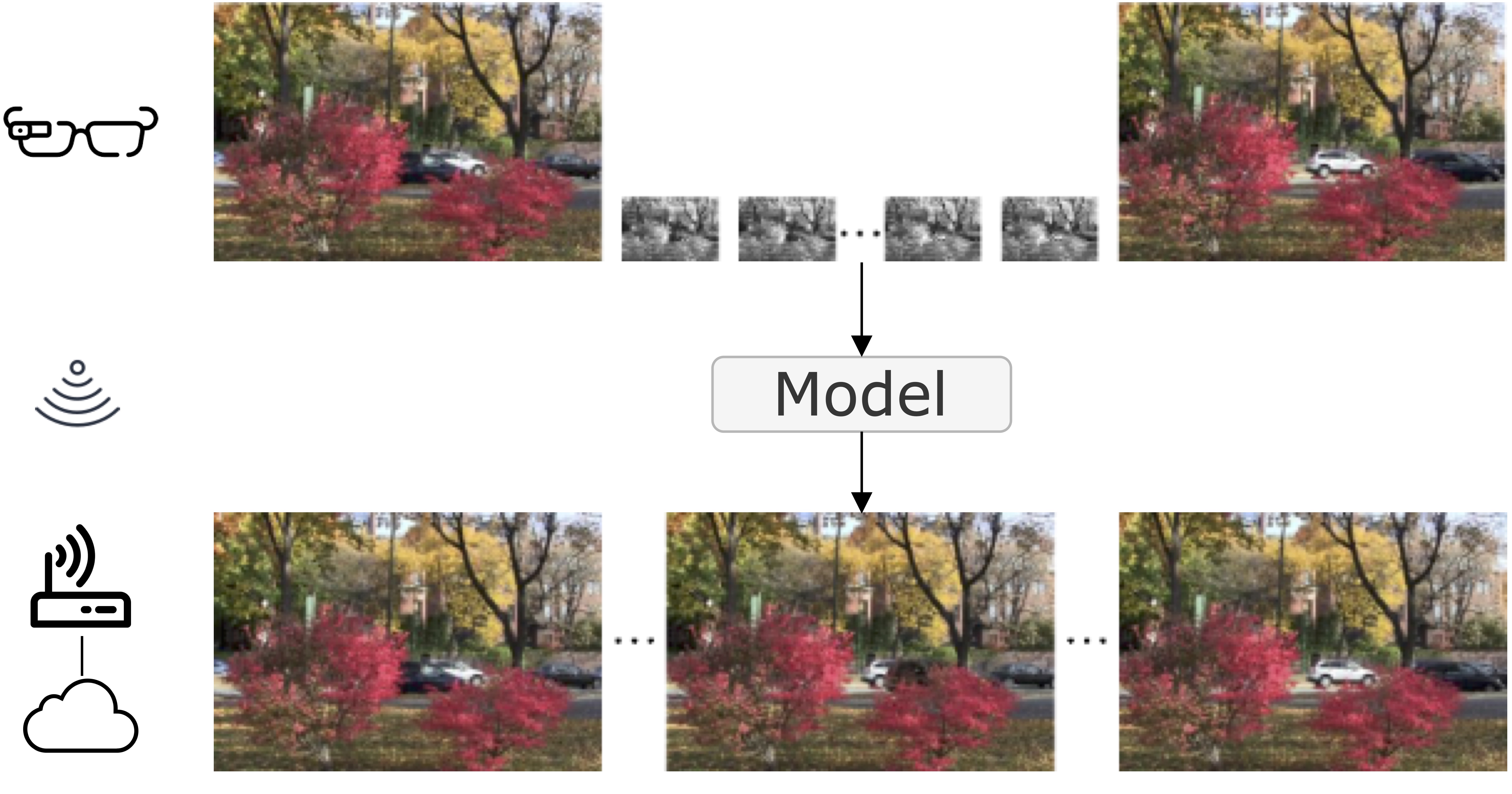A system based on key-frame video super-reosolution and colorization to achieve low-power video capture from dual-mode IOT cameras. This repository holds code for the model, NeuriCam-net, that runs on an edge receiver. NeuriCam-net reconstructs a high-reoslution color video from low-resolution grayscale stream, using periodic high-resolution key-frames.
NeuriCam.Demo.mp4
Our dual mode IoT camera system captures low-resolution gray-scale video from a low- power camera and reconstructs high-resolution color frames using the heavily duty cycled high-resolution key-frames. The real-time neural network runs on an edge device (e.g., router) that is not power constrained.
-
Create and activate a python environment with Python 3.7 or higher:
conda create --name neuricam python=3.7 conda activate neuricam -
Install requirements:
pip install -r requirements.txt -
mmcv-fullis a requirement for the model. Installation ofmmcv-fullis tricky, because it needs the cuda version to be exactly the same as the one pytorch is compiled with and needs a reasobaly old g++ (>=5.0.0, <=8.0.0). So if step2fails to installmmcv-fullsuccessfully, you might have to run:CUDA_HOME=<path to cuda 10.2> pip install -r requirements.txt
-
Download pretrained model (pretrained.pth.tar) to
experiments/bix4_keyvsrc_attn/directory. -
Download spynet weights to
model/keyvsrc. -
Evaluate:
python evaluate.py --lr_dir=<path to LR dir> --key_dir=<path to Key dir> --target_dir=<ground-truth HR dir> --model_dir=experiments/bix4_keyvsrc_attn --restore_file=pretrained --file_fmt=<file format eg., "%08d.png">
-
Training the model:
python train.py --train_lr_dir=<> --train_target_dir=<> --val_lr_dir=<> --val_target_dir=<> --model_dir=experiments/bix4_keyvsrc_attn
Each training or an evaluation run works on a 3 sets of videos avaialble in the following format:
└── lr-set └── key-set └── hr-set
├── my-cat-video ├── my-cat-video ├── my-cat-video
│ ├── frame0.png │ ├── frame0.png │ ├── frame0.png
│ ├── frame1.png │ ├── frame15.png │ ├── frame1.png
│ ├── frame2.png │ ├── frame30.png │ ├── frame2.png
│ ... │ ... │ ...
├── my-cat-vs-dog-video ├── my-cat-vs-dog-video ├── my-cat-vs-dog-video
│ ├── frame0.png │ ├── frame0.png │ ├── frame0.png
│ ├── frame1.png │ ├── frame15.png │ ├── frame1.png
│ ├── frame2.png │ ├── frame30.png │ ├── frame2.png
│ ... │ ... │ ...
... ... ...
Paths to lr-set, key-set and hr-set have to be provided to respective flags in the train and eval commands above.


